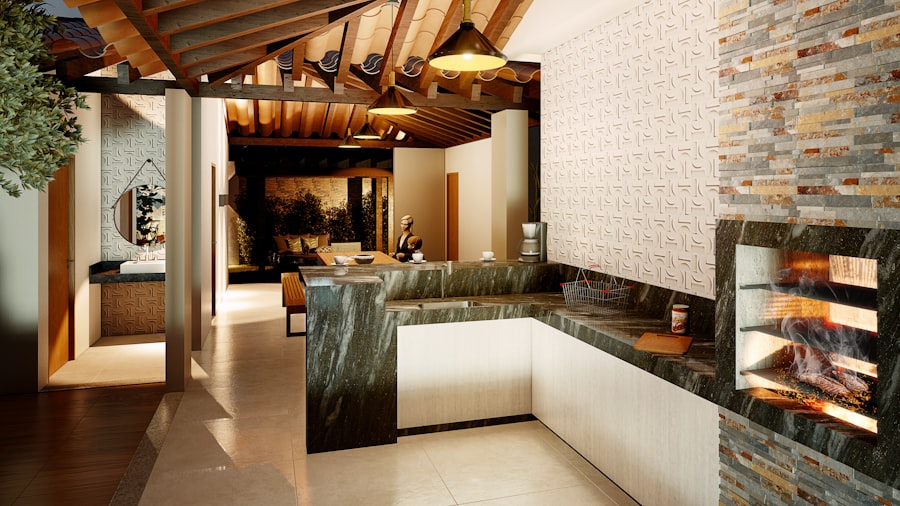The first step in any successful renovation project is meticulous planning. This phase involves not only envisioning the final outcome but also understanding the scope of work required to achieve that vision. Begin by identifying the areas of your home that need improvement or updating.
Whether it’s a kitchen remodel, a bathroom upgrade, or a complete home overhaul, having a clear idea of what you want to accomplish is crucial. Create a list of must-haves versus nice-to-haves, which will help prioritize your renovation goals. For instance, if you’re renovating a kitchen, you might prioritize new appliances and cabinetry over decorative elements like backsplash tiles.
Once you have a clear vision, it’s essential to consider the timeline for your renovation. Establishing a realistic schedule can help manage expectations and keep the project on track. Factor in potential delays due to permitting processes, contractor availability, and unforeseen issues that may arise during construction.
It’s wise to build in some buffer time to accommodate these variables. Additionally, consider how the renovation will impact your daily life. If you’re living in the home during the renovation, plan for disruptions and create a temporary living arrangement if necessary.
This foresight can alleviate stress and ensure a smoother renovation experience.
Key Takeaways
- Plan your renovation carefully to ensure that you have a clear vision of what you want to achieve.
- Set a realistic budget for your renovation and make sure to account for unexpected costs.
- Choose reputable and experienced contractors to ensure that the job is done right the first time.
- Design your dream home by considering your personal style and the functionality of the space.
- Select high-quality materials that are durable and fit within your budget.
- Maximize space and functionality by considering the layout and flow of your home.
- Add value to your home by focusing on upgrades that will appeal to future buyers.
- Maintain your renovated home by staying on top of regular maintenance tasks to preserve the investment you’ve made.
Budgeting for Your Renovation
Budgeting is arguably one of the most critical aspects of any renovation project. A well-structured budget not only helps you keep track of expenses but also ensures that you allocate funds appropriately across various aspects of the renovation. Start by determining your overall budget based on your financial situation and how much you are willing to invest in the project.
It’s essential to be realistic about what you can afford, as overspending can lead to financial strain and dissatisfaction with the final results. Once you have a total budget in mind, break it down into specific categories such as labor, materials, permits, and contingency funds. Labor costs can vary significantly depending on the complexity of the work and the contractors you choose.
Materials can also range widely in price; for example, opting for high-end finishes can dramatically increase costs. A contingency fund—typically around 10-20% of your total budget—should be set aside for unexpected expenses that may arise during the renovation process. This proactive approach can prevent budget overruns and ensure that you remain financially stable throughout the project.
Choosing the Right Contractors

Selecting the right contractors is pivotal to the success of your renovation. The quality of workmanship can significantly influence both the aesthetic and functional outcomes of your project. Start by researching potential contractors in your area; look for those with strong reputations, positive reviews, and relevant experience in the type of renovation you are undertaking.
Online platforms such as Angie’s List or Houzz can provide valuable insights into contractors’ past work and customer satisfaction. Once you have a shortlist of candidates, conduct interviews to gauge their expertise and compatibility with your vision. Ask for references from previous clients and take the time to visit completed projects if possible.
This firsthand experience can provide a clearer picture of their craftsmanship and reliability. Additionally, ensure that any contractor you consider is licensed and insured, as this protects you from liability in case of accidents or subpar work. Clear communication about expectations, timelines, and payment structures is essential; a well-defined contract can help mitigate misunderstandings down the line.
Designing Your Dream Home
| Aspect | Metric |
|---|---|
| Size | 3000 square feet |
| Bedrooms | 4 |
| Bathrooms | 3.5 |
| Kitchen | Open concept |
| Living Room | High ceilings |
Designing your dream home is an exciting yet intricate process that requires careful consideration of both aesthetics and functionality. Begin by gathering inspiration from various sources such as design magazines, online platforms like Pinterest, or even visiting model homes. Create a mood board that encapsulates your desired style—be it modern, traditional, or eclectic—and includes color palettes, materials, and layout ideas that resonate with you.
Collaboration with an architect or interior designer can elevate your design process significantly. These professionals bring expertise in spatial planning and design principles that can help maximize both beauty and utility in your home. They can assist in creating detailed floor plans that reflect your lifestyle needs while ensuring compliance with local building codes.
For instance, if you frequently entertain guests, an open-concept layout might be ideal for fostering social interaction while cooking or dining. Conversely, if privacy is paramount, consider designs that incorporate separate spaces for different activities.
Selecting the Best Materials
The choice of materials plays a crucial role in both the aesthetic appeal and durability of your renovated space. When selecting materials, consider not only their visual impact but also their long-term performance and maintenance requirements. For example, hardwood flooring offers timeless beauty but may require more upkeep than laminate options.
Similarly, natural stone countertops can add elegance to a kitchen but come with higher costs and care considerations compared to engineered alternatives. Sustainability is another important factor when choosing materials for your renovation. Many homeowners are increasingly opting for eco-friendly options that reduce environmental impact without sacrificing style or quality.
Reclaimed wood, recycled glass tiles, and low-VOC paints are just a few examples of sustainable materials that can enhance your home while promoting environmental responsibility. Researching suppliers who specialize in green building materials can provide additional options that align with your values.
Maximizing Space and Functionality

In many renovations, especially in urban settings where space is at a premium, maximizing space and functionality becomes paramount. Innovative design solutions can transform even the smallest areas into highly functional spaces that meet your needs. For instance, consider built-in storage solutions such as shelving units or cabinets that utilize vertical space effectively while minimizing clutter.
Open shelving in kitchens or bathrooms can create an airy feel while providing easy access to frequently used items. Multi-functional furniture—like sofa beds or extendable dining tables—can also enhance usability without overwhelming a room with excess furnishings. Additionally, incorporating natural light through larger windows or skylights can make spaces feel more expansive and inviting.
Adding Value to Your Home
Renovations are not just about personal enjoyment; they also represent an investment in your property’s value. Certain upgrades tend to yield higher returns on investment (ROI) than others when it comes time to sell your home. For example, kitchen remodels often recoup a significant portion of their costs due to their central role in home life and buyer appeal.
Upgrading appliances to energy-efficient models can also attract buyers looking for modern conveniences while reducing utility costs. Curb appeal is another critical factor in enhancing property value. Simple improvements such as fresh landscaping, new siding, or updated entryways can make a substantial difference in first impressions.
Additionally, consider energy-efficient upgrades like new windows or insulation; these not only improve comfort but also appeal to environmentally conscious buyers who value sustainability.
Maintaining Your Renovated Home
Once your renovation is complete, ongoing maintenance is essential to preserve both the beauty and functionality of your newly updated space. Establishing a regular maintenance schedule can help identify potential issues before they escalate into costly repairs. For example, routine inspections of plumbing fixtures can prevent leaks from causing water damage over time.
Additionally, keeping up with seasonal maintenance tasks—such as cleaning gutters, servicing HVAC systems, and checking for signs of wear on exterior surfaces—can prolong the life of your renovations and maintain their aesthetic appeal. Investing time in maintenance not only protects your investment but also ensures that your home remains a comfortable and enjoyable space for years to come. In summary, embarking on a home renovation journey requires careful planning, budgeting, contractor selection, design considerations, material choices, space optimization, value enhancement strategies, and ongoing maintenance efforts.
Each step plays a vital role in ensuring that your renovation meets both your personal desires and financial goals while creating a lasting impact on your living environment.



